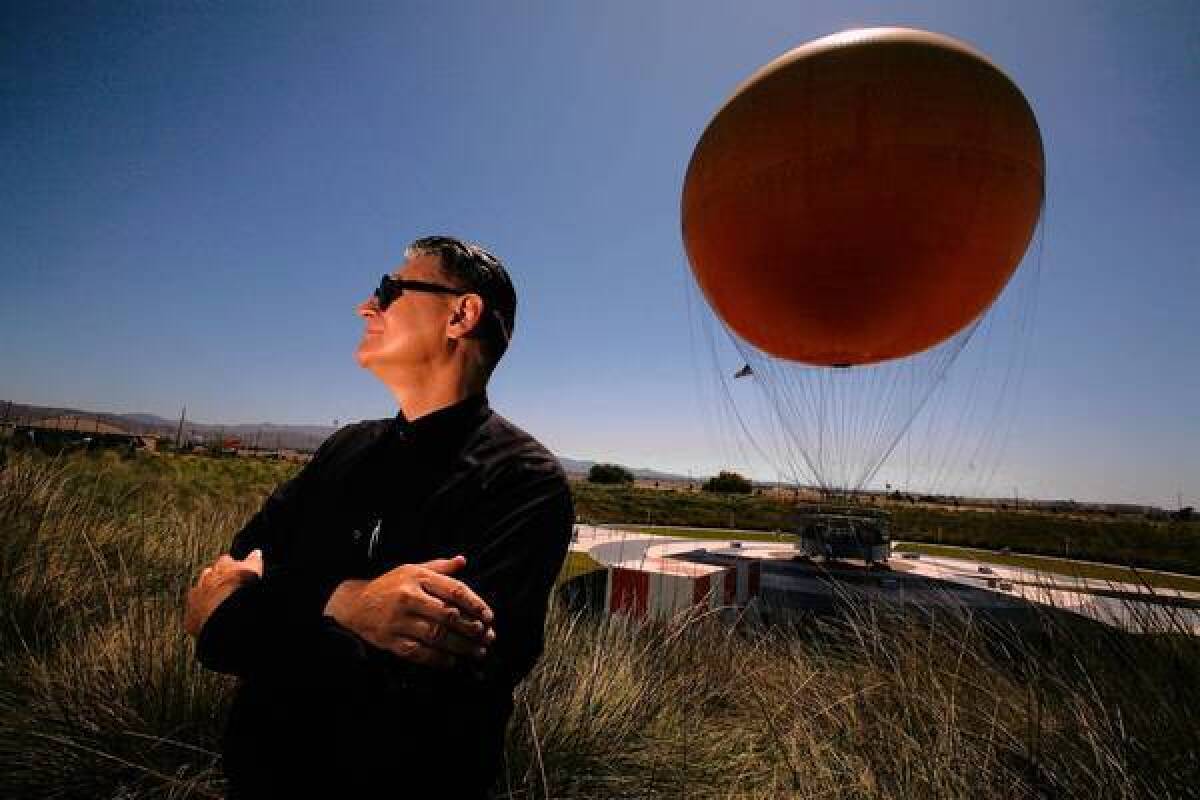Irvine set to vote on developer’s streamlined Great Park plan

- Share via
Orange County Great Park designer Ken Smith was hired for his vision. When he looked out at 1,300 acres of runways and abandoned buildings at a former military base in Irvine, he imagined a gathering place that could provide a center to this sprawling county, rivaling New York’s Central Park and San Diego’s Balboa Park.
But after years of designing an ambitious park, for which he and his team were paid millions, it seems increasingly likely that Smith’s vision will be pushed aside in favor of a more pragmatic plan.
On Tuesday, the Irvine City Council is expected to vote on whether to approve a plan proposed by a developer to build about 688 acres of the park. Gone is the long, winding canyon that was described in the park’s master plan as a “beautiful oasis — a place to wander and daydream.” In its place could be a 188-acre golf course. Gone is the largely centralized parking that would have forced people out of their cars to wander around the park. In its place, parking lots scattered throughout.
“They really are developing something that isn’t creating a great public park in any way,” Smith said. “It’s just sort of cheap and fast and takes up a lot of space.”
But after years of spending and setbacks that left the city with little money and few options, the developer’s proposal may be the only way to move forward, backers say.
“If we don’t do it now, we will have runways and weeds for the next 40 years,” said Councilwoman Christina Shea. “That’s not what we ever envisioned.”
Developer FivePoint Communities, which is building 4,900 homes around the perimeter, has proposed getting the project underway by building 688 acres of park space at an estimated cost of $172 million. In exchange, the firm would be allowed to nearly double the number of homes that will surround the park — to 9,500.
“Ken Smith can talk about his vision until the cows come home,” said Emile Haddad, FivePoint’s president and chief executive. “They have no money.”
Irvine Councilman Larry Agran, one of Smith’s most ardent supporters, said he shared some of the designer’s objections.
The current proposal, he said, “is a matter of real concern to those of us that have seen this as a public project, representative of the aspirations of the people of Orange County and Irvine, as opposed to an adjunct project of a private, profit-driven land developer.”
It’s been 11 years since Orange County voters decided to turn the closed Marine Corps Air Station El Toro into a large municipal park rather than a commercial airport.
In 2006 after an international search, the city hired New York landscape architect Smith to design the Great Park. At the time he applied, the largest park he had ever built was a 13-acre project in Santa Fe, N.M.; but city leaders liked the creativity, whimsy and ambition of his proposal, which included the winding canyon that Smith saw as a feature large enough to unify the massive park.
Seven years later, the city, which started with about $200 million from developers to build the park, has spent much of that, and only about 200 acres have been built. According to a Times analysis late last year, most of the money went to pay for plans, designs, administrative costs and consultants. Less than a fifth went toward actual park construction.
The city was also set back by the downturn in the housing market, which delayed the construction of homes along the park’s perimeter that at the time would have provided tax money for the park. Then, two years ago, the state eliminated local redevelopment agencies, dealing the project a crushing blow.
But the housing market is recovering, and FivePoint Communities has moved forward with plans to build thousands of homes along the Great Park’s perimeter. In September, the first Great Park Neighborhood homes opened for viewing by potential home buyers. Giving those buyers access to hundreds of acres of green space, sprawling sports fields and a massive golf course should help those houses sell.
“We’re in the business of lifestyle and quality of life. That’s what we do when we create master-planned communities,” Haddad said.
In addition to the $172 million Haddad has offered to spend on the park, $19.5 million would be set aside to study building an amphitheater and museums, sprucing up undeveloped parts of the park and providing for additional costs. The developers would get $40 million reimbursed through a special tax on Great Park homes.
The proposal includes an approximately 188-acre golf course, a 176-acre sports park, a 178-acre wildlife corridor, 72 acres of agricultural land, and 75 acres of woodland and a small upper canyon. Haddad says it would be a well-thought-out park that would serve the community and, despite what Smith says, be consistent with the designer’s master plan. The proposal also provides for operations and maintenance through 2023.
“We know how to do these things,” Haddad said. “This isn’t simply grassing the area.”
But Smith, who keeps an office in Irvine but no longer works on the park, sees a betrayal of the place he imagined would “serve the larger population of Orange County, the diverse population of Orange County.”
“The golf course is a very easy thing,” he said. “It very easily takes up a lot of space and doesn’t cost a lot of money and creates a very great front lawn for the housing units. But a golf course is … a very limited public that it’s providing a park for.”
Esquivel writes for the Los Angeles Times.